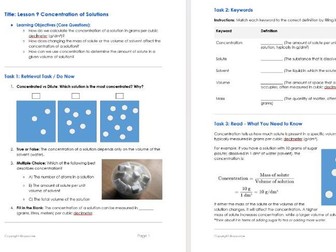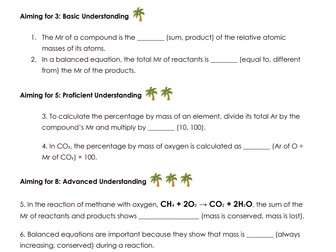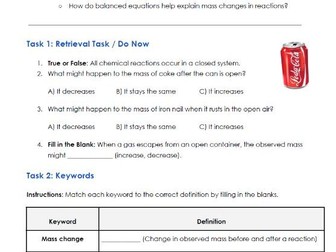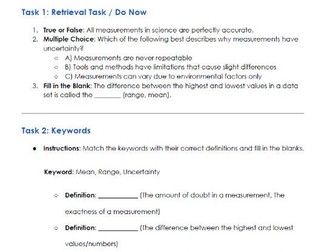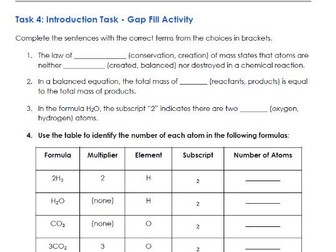GCSE_C3 Quantitative Chemistry_Lesson 9 Concentration of solutions
<p><strong>This worksheet is aimed at Supporting SEN and EAL students using task-based structure.</strong></p>
<p><strong>Mastering Solution Concentration: Comprehensive Chemistry Worksheet</strong></p>
<p>Description:<br />
This engaging worksheet help students to grasp essential concepts in solution concentration, unit conversions, and calculating concentration. Through a <strong>variety of structured tasks, this worksheet breaks down complex ideas into easy-to-follow steps.</strong></p>
<p>Worksheet Highlights:</p>
<p>Learning Objectives</p>
<p>Understand how to calculate concentration in g/dm³.<br />
Explore the impact of changing solute mass or solvent volume on concentration.<br />
Use concentration calculations to determine the amount of solute in solutions.<br />
Interactive Tasks</p>
<ul>
<li>
<p>Retrieval Task: Start with fundamental questions on concentration and dilution to gauge prior knowledge.</p>
</li>
<li>
<p>Keywords Matching: Define key terms like “concentration,” “solute,” “solvent,” “mass,” and “volume” to build a strong foundation.</p>
</li>
<li>
<p>Reading Comprehension: Concisely explains concentration concepts, helping students understand why concentration matters in chemistry.</p>
</li>
<li>
<p>Gap Fill and Conversion Practice: Exercises on measuring units, converting cm³ to dm³, and calculating concentration reinforce practical skills.</p>
</li>
<li>
<p>Guided and Independent Practice: Hands-on calculations of concentration and mass with reflective questions to solidify understanding.</p>
</li>
<li>
<p>Knowledge Test and Exam Preparation</p>
</li>
<li>
<p>Mini Whiteboard Quiz: Quick questions assessing basic to advanced understanding of concentration, solute, and solvent concepts.</p>
</li>
<li>
<p>Exam-Style Questions: Multiple-choice, calculation, and extended-response questions to prepare students for assessments, along with practice on real-world applications of concentration in fields like medicine and lab work.</p>
</li>
</ul>
